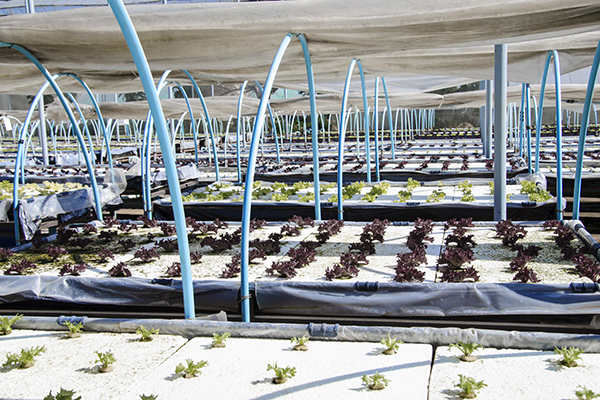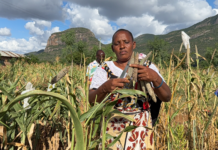At a time in Southern Africa, when food scarcity is a very real concern, it is even more important for the agricultural sector and horticulture specialists to make sure they have optimum growth conditions in nurseries and greenhouses.
“A critical part of providing a healthy growing environment for plants is controlled water and fertilizer distribution in optimal amounts, to ensure high quality of each vegetable, herb or shrub,” says Sefton Fripp, Commercial Executive, Fibertex South Africa, specialists in nonwovens and performance-based materials for use in diverse industries. “The Fibertex team works closely with farmers and horticulturalists globally to continually improve plant growing conditions, through the development and manufacture of eco-friendly products that make it easier to care for plants correctly.
“Included in the broad range Fibertex range of horticulture products are geosynthetics used for constructing growing tunnels and high-density polyethylene (HDPE) drainage pipes, which are UV stabilised and offer high impact resistance to avoid damage during installation, as well as improving mechanical service life and ensuring extended service life in exposed propagation environments. Fibertex capillary mats have been specially designed for controlled sub-irrigation for efficient nursery production.
“The installation of Fibertex capillary mats in nurseries and greenhouses improve the quality of plants by providing the best growing conditions. Capillary mats ensure uniform water storage and reduced disease, fungus and rot, due to the controlled water hold. These mats, which are also well suited for computer-controlled watering systems, eliminate dry spots and prevent areas with insufficient fertilizer.
“Fibertex capillary mats are simple to cut without any fraying at the edges and are easy to join by welding or glueing. These durable mats can be re-used many times and maintain high strength, even in wet conditions. Added to this, they are easy to clean with a high-pressure cleaner or a firm brush.”
Fibertex PPR 443 capillary mats are the most popular type of capillary mats for sub-irrigation with hoses. This range has an excellent balance between capillary action and water retention capacity and is suitable for use in all nurseries and greenhouses.
The highly efficient capillary function of this material enables exact control of the dry/wet cycle, ensuring uniform water and fertilizer distribution on sloping benches, sand bottom and concrete floors.
These grey mats (150 g/m² weight and 1.0 mm thickness) have a capillary lift of 8.0 cm and are available in a maximum roll width of 520 cm and standard length of 100 lin m.
Fibertex F-80 capillary mats, with excellent filter properties, have been developed for ebb and flood benches, preventing dirt build-up in the nozzles and irrigation system. Although the main function of this material is for filtering, these mats have also been designed to absorb the remaining moisture and distribute this evenly to plants, after irrigation is completed.
These white mats (80 g/m² weight and 0.6 mm thickness) have a capillary lift of 7.0 cm and are available in a maximum roll width of 520 cm and standard length of 200 lin m.
All Fibertex horticulture products are manufactured to stringent environmental and quality standards, including ISO 9001 certification.
The Fibertex geosynthetics range encompasses nonwoven and woven geotextiles, gabions and mattresses, drainage pipes and fittings and erosion control and cellular confinement solutions. The company also supplies soil reinforcing and stabilising products, including geogrids and geocells, as well as geosynthetic clay liners as part of composite lining systems in modern landfills.
Fibertex is the largest manufacturer of UV stabilised virgin PP (polypropylene) nonwoven geotextiles produced in Africa, with certification for durability of over 100 years, in accordance with the latest EN standards.
The local Fibertex team supports the diverse product range with technical advisory service throughout the African continent.









[…] Source link […]
Comments are closed.